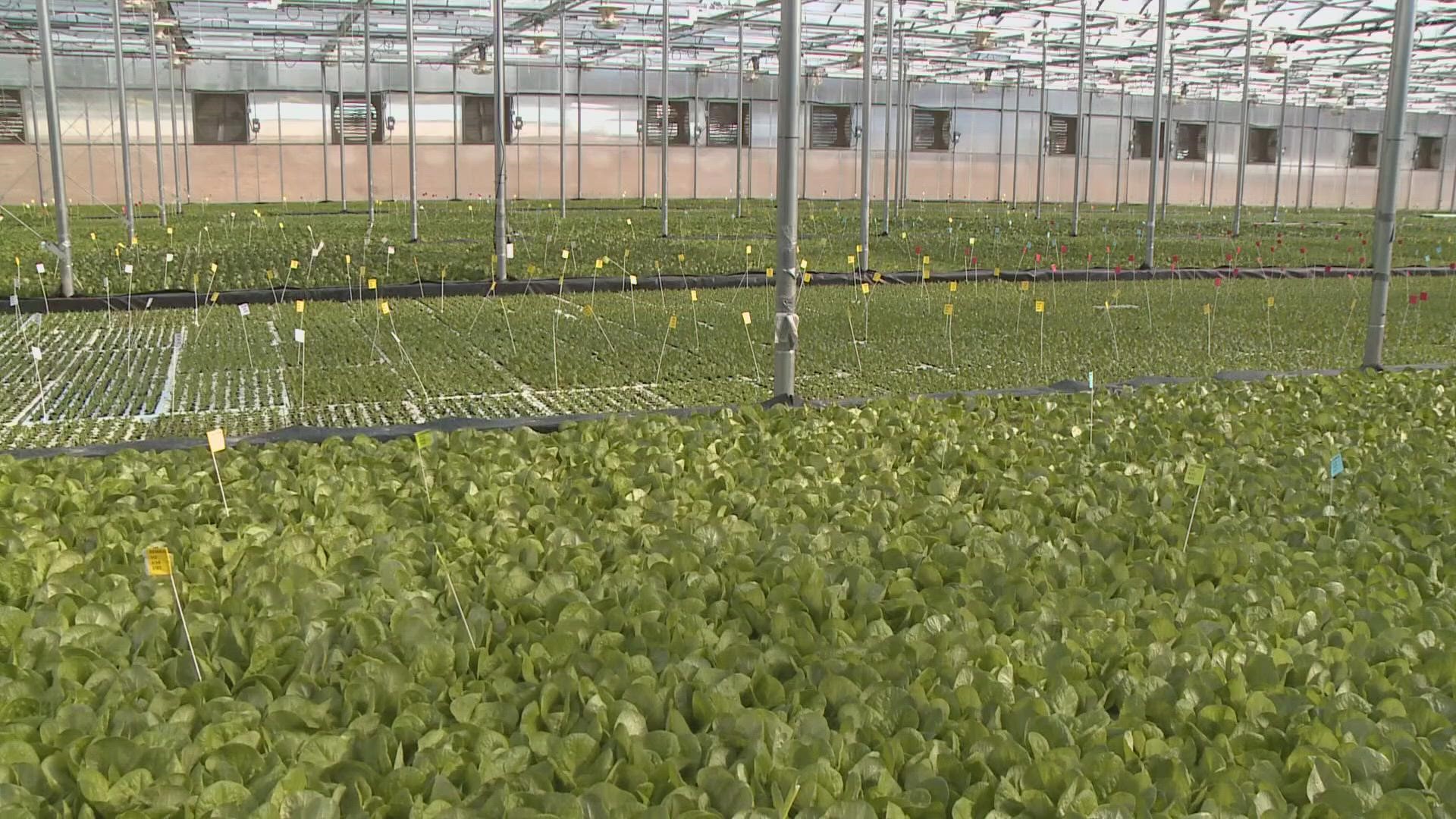LISBON, Maine — The bright green of Boston Bibb lettuce, filling thousands of square feet of greenhouse, is a welcome sight on a chilly winter day. But at Springworks Farm, that carpet of growing green is rolled out year-round.
The nine-year-old farm in Lisbon is growing some two million heads of lettuce per year, according to founder and president Trevor Kenkel.
The lettuce is all organic, he said and has become a staple for shoppers at Hannaford supermarkets.
And people buying and eating that lettuce can thank the fish.
Springworks uses an innovative process, designed and built by Kenkel, that raises thousands of Talapia fish in large tanks, and uses their wastewater to fertilize the lettuce. The plants, he said, clean the water so it can then be recirculated, filtered, and sent back to the fish tanks.
“We get certified organic lettuce in the greenhouse, and the fish get clean water in return,” Kenkel said.
“And we use about a tenth of the water of a conventional field. We grow about 20 times more lettuce per acre than a conventional operation, and we’re able to do it all year, here in Maine.”
Aquaponics, he calls it. Meaning fish and plants grow together and benefit each other.
Kenkel says he started experimenting with the idea when he was growing up in Montana, and that fertilizer and other runoff damaging local streams made him interested in sustainable agriculture.
He began the first greenhouse for Springworks Farm just before the start of his freshman year at Bowdoin College.
“We actually started building the month before move-in. Move-in happened and also greenhouse construction,” he said.
After graduating with a biology degree, Kenkel devoted himself full-time to the farm. Since then, it has expanded twice and now has close to 40,000 square feet of greenhouse and 40 employees.
“Well, you hope for things,” Kenkel said when asked if he has been surprised at the rapid growth of the business. “It is amazing. At the end of the day, to appreciate where we came from. Having a three-person team initially to having tens of people appreciate what we’re doing.”
He said the lettuce is all raised from seed on the Lisbon farm, starting under special grow lights for the first week and a half, then transplanted to floating trays in the greenhouse. The lettuce has a small amount of soil, but the roots sit in the water and absorb nutrients from the fish waste.
Kenkel added the lettuce will grow in the greenhouse for about a month, then be harvested and sent to market.
“It's incredible lettuce,” he said, proudly.
Emily Donaldson, Springworks’ business development director, said their process is also better for the environment because the lettuce is grown locally — unlike other products on the market.
“As it is now, 95 to 97 percent of all the lettuce is grown in Arizona and California. So when our retail customers see the difference in quality and the benefit of a regional food option, it's nothing but support,” Donaldson said.
That support is also helping fuel a major expansion of Springworks Farm. Donaldson said they have just completed raising a total of $22 million in financing which will result in a far larger operation.
“We will be adding around 500,000 square feet in the next six years," Donaldson said.
That work, she added, will begin in the spring with the construction of a fourth greenhouse and fish tank building, about three times the size of what they have now.
“We’re excited because it's all to meet the demand for local organic lettuce,” Donaldson said.
She explained the financial support for the business continues coming from some individual investors, whom Donaldson calls shareholders, from Maine-based organizations such as the Maine Technology Institute (MTI), Coastal Enterprises, Efficiency Maine, and the Finance Authority of Maine (FAME), along with national funding from Farm, Credit and a fund called Blue Highway Capital.
Kenkel said he thinks that financial support is because of the success the business has already shown and because the basic idea — while technically complex — is about growing food locally in a sustainable way.
He said the next new greenhouse should be ready for plants and fish by the end of 2023.

